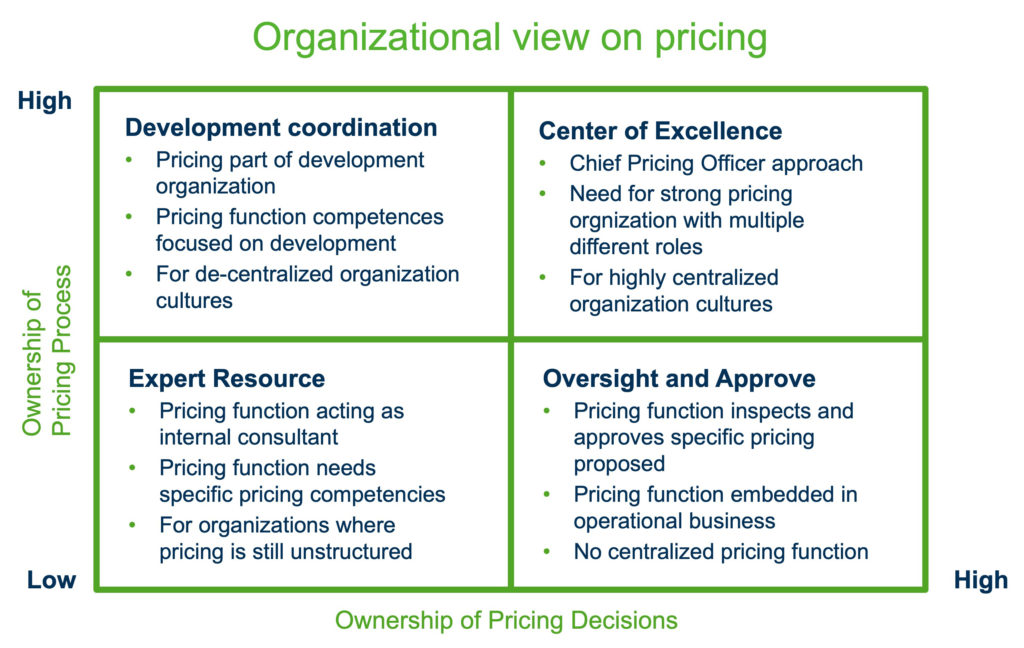
What is the role of pricing in your organization? Does pricing act as an expert resource or a center of excellence? Is the pricing function responsible for developing pricing as a key business capability, or does it exist to approve proposed pricing? In this article Kalle Aerikkala, Business Consultant at Vendavo, illustrates considerations you should make to help you decide where to situate your pricing function and how to organize it.
Pricing is the most immediate and impactful lever any organization can pull to improve revenue and profitability. For many organizations though, the pricing function is undefined or unstructured. Some companies employ hundreds of pricing professionals, others have one or even none. Some organizations give pricing ownership to sales, others leave it up to marketing.
What is the right department for pricing to function inside an organization? Who owns it? How should it be organized? What model should you use? How many resources should be dedicated to it?
These are all great questions, and the answer is, it depends.
Pricing could be located in sales, marketing, product management, finance, or exist as an independent function entirely. It all depends on your unique business needs and goals. Here are some helpful considerations to make to help you decide where to situate your pricing function and how to organize it.
How You Situate the Pricing Function Depends on Your Organization’s View on the Role of Pricing
Before you build your operating model, consider what responsibility and ownership you want pricing to have over your pricing process and pricing decisions. This will help you decide if pricing needs to develop and coordinate, act as an expert resource, provide oversight and approvals, or operate as a center of excellence.

The primary split in how the organization is drawn comes down to whether the pricing function should be responsible for developing pricing as a capability, or simply be involved in operational pricing decisions. When the pricing function is more involved in active pricing, competencies for interaction with sales and customers are needed significantly more than in a setting focused on developing capabilities.
Another factor to consider is the overall structure of your organization and where decision-making falls. When your organization is working in a centralized fashion, the pricing function usually operates as a Center of Excellence and is more involved in operational pricing.
Organize Pricing According to Your Organization’s Maturity and Needs
In the end, the pricing function should be organized according to your organization’s specific needs. It’s also important to consider your overall maturity development. At Vendavo, we’ve developed a useful tool to help you assess where you stand in your journey. You can take the Commercial Excellence Maturity Assessment here.
Take Vendavo’s Commercial Excellence Maturity Assessment
If your pricing is or, until recently, has been unstructured, then centralizing all of it at a quick pace may well prove too much of a change to adopt. Organizing the pricing function should be more of an evolution than a revolution, as the all-important pricing strategy and communication activities need to operate undisturbed to keep the business profitable.
Keep in mind that regardless of how you decide to organize the pricing function, pricing strategy formulation and communication around pricing will not change. Setting the overall pricing strategy is a top management decision facilitated by the pricing function, but the importance and decision-making will remain the same. When it comes to communication around your pricing, it will always be important for information to flow from pricing to sales to customers and this should be a focal point in any organization, regardless of the model you set in place.